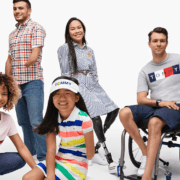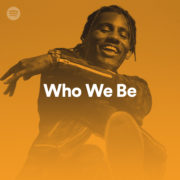Why the fashion industry must value universal design

By Emily Pavis
My mother was diagnosed with relapse remitting Multiple Sclerosis the year I was born. Ever since, I grew up in the aughts witnessing her become more and more sick, and at the same time, more and more immobile. Her condition made her tired and unable to do a lot of things that other mums could. She has scars across her brain, neck, and spine, preventing her ability to perform basic functions like feeling temperatures or using her fingers. Now, without a known cure, after trying steroids and stem-cell therapy, she was re-diagnosed with secondary progressive MS in 2017. Since then, it has proceeded to numbness and spasticity throughout her whole body, preventing her from being able to walk and move seamlessly. At almost 48 years old, she has a handful of major physical disabilities, and has already gone through three rounds of chemotherapy.
Long before she had me and MS, she loved fashion. She modeled as a teenager and designed and sewed a red dress for herself for her secondary school dance. She engrained this love for fashion into me from a young age. She’d wear massive faux-fur coats with funky dresses paired with a y2k pink and orange square Dior watch, and let me try on her chic black wedding platforms that were way too big for me as a seven-year-old. Every year she’d buy me September issues of Vogue. We’d watch Project Runway together and giggle about Tim Gun’s often harsh critique. My favorite challenge was “All Dolled Up” during season 2 where the contestants made looks from Barbie’s outfits; Nick Verreos won the challenge.
But those high fashion days are in the past. Today she is constricted to yoga pants, crewnecks, and tennis shoes because she can barely get herself dressed, and tight clothing is constricting and painful. With a so-called “innovative” fashion industry that capitalizes off of creativity, why aren’t there more inclusively designed and stylish wardrobe options on the market, ones that would allow my mum to truly express herself today?
People with disabilities are the largest minority group in the United Kingdom, with 22% of British people having some kind of disability, according to the UK Department for Work and Pensions. Yet it seems like society was built to exclude almost a quarter of its population, and an update is long overdue. While architecture and physical space may seem like the obvious challenge (such as stairs for people in wheelchairs or non-automatic doors for people with limited to no arm mobility), clothing is another major barrier that people with disabilities are constantly battling, and those without don’t know enough about.
During Spring 2021, I took a class at Parsons School of Design in New York City called “Health, Disability, and Fashion” taught by Professor Grace Jun, CEO of the nonprofit organization Open Style Lab (OSL). OSL aims to educate everyone from students to corporations on how to incorporate inclusive design into their world; whether it be in the office space, retail store or via actual clothing design. That’s how I learned about universal design, a concept which considers every level of human mobility in society when designing a product. It takes into account a wide-range of varying abilities, from children to the elderly, to those with disabilities, to those without. Ultimately, it’s a design process that includes everyone, regardless of ability.
One example of a universally designed product is automatic doors. They are convenient for the able-bodied who might have their hands full, helpful for children who may not be tall enough to open a door, and suitable for people in wheelchairs or those who use other assistive devices to enter a building without hesitation.
With universal design slowly but surely being incorporated into architecture, it’s time for the fashion industry to adhere to this process. Because my mum lacks fine motor skills, buttons and zippers are close to impossible to maneuver for her. She needs help putting on her clothes every morning and night, so she avoids more complicated clothing for the ease of who’s assisting her. Putting on and taking off denim jeans is also a struggle for her, as she is unable to balance very well and can’t fully stand up straight without crutches or a walker. Even basic can hoodies become difficult when arm mobility is limited.
While collections like Tommy Adaptive and Ugg Universal exist to accommodate people with disabilities, these lines are limited and tend to “other” the individual by creating a special line just for them. With universal design adhering to everyone’s needs, the feeling of being an outsider or different is erased.
Plus, universal design isn’t there just to accommodate people with chronic disabilities. Have you ever broken an arm and had it in a cast? How easy was it to get yourself dressed? Not every person with a disability has it for life; people with temporary disabilities also face accessibility barriers. Furthermore, the elderly, as well as pregnant and breastfeeding individuals also have compromised abilities, although not commonly considered as having a disability.
Due to alternative mobility and physical function, anyone who has some kind of alternative mobility capability wears clothing options that are most functional for them, ignoring the style factor. This comes at a major psychological price, as style is a form of nonverbal communication, serving as a venue for self expression. Because clothing is so close to the body, it helps to form one’s own identity and understanding of themselves. My mum exudes confidence sporting her Union Jack ballet flats with skinny jeans, compared to being more shy when wearing bulky tennis shoes with orthotics and versatile yoga pants. But the flats and jeans do not accommodate her needs.
With such a significant role in our society, it’s time for the fashion industry to make some changes. Fashion research teams should work with people with disabilities to try and understand their needs, and reconstruct the typical form of clothing so that it’s wearable for everyone, and not just 75% of the population. The fashion industry must incorporate
universal design, to include every level of human need. So many people, including my mum, deserve this venue for self expression and shouldn’t be restricted from the fashion industry that prides itself on inclusion and creativity. Because while people with disabilities are still excluded, it’s neither of those things.
Discover more from GUAP’s Fashion section here

